Introduction to Rain Water Harvesting in Dakshana Valley
India’s groundwater use was just about 7 cubic kilometers in 1940; it is around 270 cubic kilometer today. Since 1950, the total share of groundwater in irrigation has nearly doubled. The groundwater extraction rose sharply during the late 70s and 80s. People connect it with the Green Revolution during which two things happened:
-
Building of large dams by governments
-
Small and marginal farmers bored wells everywhere.
India has become the largest user of ground water in the world. Now, ground water supports around 60 per cent of irrigated agriculture and more than 80 per cent of rural and urban water supplies. The livelihood of 26 crore farmers and agricultural laborers crucially revolves around groundwater.
Source: Managing Water Under Uncertainty and Risk, United Nations Educational, Scientific and Cultural OrganizationData for 2010. Together, these countries account for 72% of the groundwater extracted annually.
The water table is steadily dropping and most parts of India are short of water. In many regions, people are even pumping out fossil water. Fossil water refers to underground water reservoirs that have been geologically sealed. The water contained in them cannot be replenished and may have been locked in for thousands of years. The age of the water is what gives it the name ‘fossil water’.
False colour NASA image of fossil water irrigation in Libya
By their very definition fossil water resources will eventually run out once they begin being used. Groundwater depletion can be compared to ¨money in a bank¨.
We are steadily inching towards catastrophe. For some regions, catastrophe is already here in the form of farmer suicides.
The state of Maharashtra recorded the highest number of suicides after which came Telangana, Andhra Pradesh and Tamil Nadu.
Out of a total of 5,723 ground water blocks in the country, 1,615 are classified as semi-critical, critical or overexploited, and regulatory directives have been issued by the Central Ground Water Authority for 108 blocks. However, neither the authority nor the state ground water agencies have the resources or the personnel to oversee the enforcement of these regulations.
The Marathwada region of Maharashtra lies in the rain shadow area of the Western Ghats. The average annual rain fall varies between 20 and 30 inches. It is a semi-arid region. Almost the entire region falls in the Critical or Semi-Critical zones.
Anna Hazare has done pioneering work in water management at Ralegan Siddhi which lies in the Critical zone. See map below.
Location of Ralegan Siddhi. Kadus village, site of Dakshana Valley, can also be seen in the map.
The foremost requirement is to remove the mindset that water is an infinite resource and all that is needed is a further development of groundwater reservoirs. It must be recognized that the ‘era of further water development is already over’ and we must now urgently move towards better and more efficient water management. Anna Hazare has done much in this regard and has been an inspiration for all of us.
Check dams at Ralegan Siddhi (representational image)
Ralegan Siddhi now has adequate water for domestic use, agriculture and animal husbandry. It has become a prosperous village and an example to the rest of Marathwada.
My friend and course-mate, Joseph Thomas, has done rain water harvesting at Jal Vayu Towers, Bangalore and revived the bore wells in his colony. Another friend and course-mate, Col Ram K Sharma, is the Honorary CEO of Dakshana Foundation, a non-profit NGO. Dakshana has 110 acres of land near Kadus village which is just 50 km from Ralegan Siddhi. They have ambitions of scaling up their resident student population from the current 400 to as much as 6000. Clearly, water supply is a major constraint and Ram requested Thomas to visit and recommend suitable measures.
While our immediate aim has been to enable Dakshana Foundation to collect and store enough rain water for their needs, our broader aim is to set an example to the rural areas of Marathwada. The article below is an account of his visit and recommendations.
Sequel to Rain Water Harvesting at Jal Vayu Towers
RAIN WATER HARVESTING IN DAKSHANA VALLEY
by
Joseph Thomas
Dakshana India Educational Trust prepares brilliant but impoverished students, mainly from rural areas for engineering and medical entrance examinations. Gifted students from Jawahar Navodaya Vidyalayas and government schools across India are selected for intensive coaching after Class 10 & Class 12 based on their academic record and results from Dakshana’s testing.
The main campus is at Dakshana Valley. It comprises 110 acres located in scenic surroundings at Village Kadus, Taluka Rajgurunagar, Khed, Maharashtra 412404, India. It is 13 km by road north west of Rajgurunagar and 51 km from Pune airport.
In addition, there are 7 campuses that are adjunct to Jawahar Navodaya Vidyalayas (JNV) at
JNV Bengaluru Urban (Karnataka), JNV Bundi (Rajasthan), JNV Kottayam (Kerala), JNV Lucknow (Uttar Pradesh), JNV Pune (Maharashtra), JNV Rangareddy (Telangana) & JNV Silvassa (Dadra & Nagar Haveli).
Dakshana offers a 2-year coaching program exclusively to students of Jawahar Navodaya Vidyalayas (JNV). Dakshana has inducted 2900+ students in this program since 2007. More than 1400 of Dakshana Scholars, till 2017, have cracked the JEE Advanced to secure admissions into IITs, while the others have cleared the AIEEE or JEE Mains to pursue an education in engineering and science at premium institutions like NIT and others in the country.
Dakshana also offers a free 1-year coaching program to prepare for IIT and medical entrance examinations to students from government and government-aided schools in India, after Class 12 (Science), at the Dakshana Valley, Pune. Dakshana Scholars coached under the 1-year program produced 100% results at the JEE Mains 2017 and 98% at JEE Advanced 2016.
One Year Program Students at Dakshana Valley
Dakshana is a non-profit Trust that relies entirely on donations. The Founders and main donors are Mohnish Pabrai and Harina Kapoor, NRIs based in USA.
The honorary CEO is Col (Dr) Ram K Sharma of XIX NDA course (28th IMA). He served in the Regiment of Artillery. He took early retirement in 1993, after front-line experience in three wars.
Commander Arun Kumar Mishra is an alumnus of National Defence Academy and IIT Kharagpur. He joined Indian Navy in 1994, got his B. Tech degree from Naval College of Engineering and later went on to graduate with an M.Tech from IIT Kharagpur. He was also selected for TMC and holds PGDMS from Jamnalal Bajaj University.
Sharmila Pai joined Dakshana in January 2010 after spending 20+ years in the corporate world. She brought with her a wealth of experience and a very compassionate nature. She has spent the past eight years at Dakshana and has handled the Dakshana 2-year coaching program and DAAN (Dakshana Alumni Network) with maximum efficiency.
At the invitation of Colonel (Dr) Ram K Sharma, CEO, Dakshana Foundation, I visited Dakshana Valley (DV) on 15 & 16 January 2019. Prior to the visit I had studied the map and satellite picture and also visited Jawahar Navodaya Vidyalaya , Bagalur, Bangalore.
The aim of the visit was to study and brainstorm on the development of the Dakshana campus with special emphasis on water management. It turned out that both Dakshana and the previous owner,
Dr Kataria, had already done a lot of work in developing the water resources of the campus. Hence, it was a pleasure working with the management.
Satellite image of Dakshana Valley is placed below.
Dakshana Campus
While Dakshana Valley (DV) does receive the southwest monsoon, it is in the rain shadow area. The Köppen-Geiger climate classification is BSh (semi-arid). A semi-arid climate or steppe climate is the climate of a region that receives precipitation below potential evapotranspiration, but not as low as a desert climate. Semi-arid climates tend to support short or scrubby vegetation and are usually dominated by either grasses or shrubs.
The average annual temperature is 24.8 °C. About 734 mm (29 inches) of precipitation falls annually. The challenge is that almost all of it falls during the monsoon season.
MONTHLY AVERAGE TEMPERATURE AND RAINFALL AT DAKSHANA VALLEY
|
|
Average Temp (C) |
Average Rainfall (mm) |
Average Rainfall (Inches) |
January |
20.9 |
0 |
0.0 |
February |
22.7 |
0 |
0.0 |
March |
26.0 |
2 |
0.1 |
April |
28.6 |
10 |
0.4 |
May |
29.4 |
48 |
1.9 |
June |
27.2 |
97 |
3.8 |
July |
24.7 |
231 |
9.1 |
August |
24.3 |
122 |
4.8 |
September |
24.6 |
116 |
4.6 |
October |
25.2 |
79 |
3.1 |
November |
22.7 |
24 |
0.9 |
December |
20.8 |
5 |
0.2 |
Total |
|
734 |
28.8 |
The annual rainfall in Dakshana Valley amounts to 9 lakh litres per day. Assuming that 10 % of this can be utilized for domestic purposes, we get 90,000 litres per day. If each person requires 100 litres per day, then the rain water can support a population of 900 persons.
While a detailed study was not possible due to the short time slot given by Dakshana, a fair amount of information has been collected. A panoramic view was made possible by climbing to the top of the water tank of the new girls’ hostel that was under construction. A tour of the campus, except the hill slopes, was undertaken partly by vehicle and partly on foot.
Index to areas of interest to water management
Even though it was the dry season, it was encouraging to see water at four locations (see Index above) :
Western Lake (#3)
Eastern Lake (#10)
Open Well (#7)
Outlet of STP ((#12)
Currently, the main source of water supply is a large well near the Kadus dam. The site of the well is owned by Dakshana. However, the pipeline passes through other people’s property
RAIN WATER MANAGEMENT MEASURES
The following have been recommended to Dakshana :
Items 1 & 5 —Hill Slopes
The Hill slopes (1- (West) and 5 – (East)) cover about half the area of Dakshana Valley. Therefore, fully half the rain water falls there. Moreover, the water received on the hill slopes can be utilized several times before it flows out of the property. Therefore, they are of utmost importance.
Planting of trees in the hill slopes will reduce soil erosion, increase soil fertility, water retention capacity and total available nutrients. All this will also benefit the lower lying areas.
Check Dams
Check dams reduce the speed of the flowing water in the rivulets on the hill slopes. The reduced speed of water gives enough time for water to infiltrate into the ground, thus increasing the ground water level in that particular area. Check dams are an ancient technique dating all the way back to the second century A.D.
As a strategy to stabilize hill streams, the construction of check dams has a long tradition. Because the steep slope causes the flow velocity to move faster, a terraced system of multiple closely spaced check dams is ideal to reduce velocity and thereby counteract erosion.
Small Check Dam for Hill Slopes
Spacing. The check dams should be spaced such that the toe of the upstream check dam is at the elevation of the downstream check dam’s crest. By doing so, the water can pond between check dams and thus slow the flow’s velocity down substantially as the water progresses downslope.
Maintenance
Check dams should be inspected after every large storm. It is important that rubble, litter, and leaves are removed from the upstream side of the dam. This is typically done when the sediment has reached a height of one-half the original height of the dam.
Completed Check Dams
Trenches and Terraces.
The previous owner, Dr Kataria, has created some terraces on the hill side. This work needs to be completed. An interim measure is to did dig trenches along the contours. Utilisation of JCBs / equivalent will be far more economical than manual labour.
Trenches and terraces capture water and allow it to soak into the ground, thus increasing the ground water level in that particular area. Trenches should follow the contour of the ground. They can be staggered, as convenient. At the bottom of the slope, a continuous trench should be dug.
What to Plant on the Hill Slopes ?
Grasses
The existing grass is obviously adapted to the climate and soil. It may be left alone and it will thrive when the water retention improves. More the growth of grass, greater the formation of topsoil.
Vetiver Grass
Vetiver grass is a native of India that has gone international.
See http://vetiver.org and https://en.wikipedia.org/wiki/Chrysopogon_zizanioides
Vetiver grows under extreme and wide range of conditions:
• Long Living Perennial Grass
• Temperatures: -12 o C to >55o C
• Soil pH from <3 to >10
• Annual Rainfall <300 mm to > 5,000 mm
• Tolerant to all heavy metals
• Saline tolerant
• Fire tolerant
• Few Pests and diseases
• Powerful (75 Mpa root strength) and deep root system
• Non competitive and non invasive
Vetiver rows on steep hillside
The reason Vetiver works so well for erosion control is it produces a massive root system that grows straight down rather than out from the plant. It creates a curtain beneath the soil, trapping sediment and slowing down the movement of water. Because the grass grows down instead of outward, it does not become invasive.
Lemon Grass and Citronella
These are aromatic grasses that will help to stabilize the soil and retain water. They will reduce the population of mosquitos and other insects. They yield aromatic oils when distilled.
Bamboo
While second to Vetiver in terms of erosion controls, it is more readily available. Unlike Vetiver, it forms clumps and keeps spreading. In the early stages, this is a good characteristic. But, in the long term, it can be a nuisance. The answer is to periodically cull the plants and sell them. Bamboo is in great demand.
Bamboo Clump
If bamboo is planted just before the monsoon, it will establish itself during the rainy season. Hence, no further care or watering will be required. The first priority should be given to planting of bamboo on the hill slopes.
Ideally, the entire hill slopes of Dakshana valley should be planted by mid-June 2019. This will be a massive operation. It will be possible by organizing a joint project with helpful NGOs like Isha Foundation
Trees for the Hill Sides
Local species are obviously adapted to the soil and climate.
Neem is highly desirable because its leaves, fruit and nuts work as natural pesticides. By planting neem on the hill sides, these products travel downhill and enrich the soil below.
Flowering trees like Gul Mohar and African Tulip will give colour to the campus.
Eucalyptus Citriodora is fast growing and yields Citronella oil.
See https://en.wikipedia.org/wiki/Corymbia_citriodora
Item 2 — Playground cum Pond
This is a triangular pond that has water only during the rains. The ground may be leveled to make a playing field — volley ball, basket ball etc — for use in the dry season. The bund height may be raised so that the storage capacity is increased. This will provide water for longer periods. The overflow and percolation will feed Item 3, the major Western lake.
Item 3 — Western Lake
This lake has the largest area among the current water bodies. It may be deepened, widened and the bund height raised. The bund height should be raised so that the water rises up to the road dividing it from Item 2.
The western shore of the lake partly belongs to the previous owner. In case he is willing to sell, the adjacent property may be purchased so that the entire expanded lake is incorporated within Dakshana Valley.
Item 4 — Small Pond
This may be widened and deepened.
Item 6 — Playground Cum Pond
This is another triangular pond that has water only during the rains. The ground may be leveled to make a playing field — volley ball, basket ball etc — for use in the dry season. The bund height may be raised so that the storage capacity is increased. This will provide water for longer periods. The overflow and percolation will feed Items 7, 8 and 10 — the water bodies below.
Item 7 — Existing Well
This well currently has water in it. It should be cleaned, repaired and deepened by about 10 feet. A parapet wall at least 4 feet high should be built around it for safety. When the water harvesting measures kick in, this well will become the major source of water for the campus.
Item 8 — Existing Deep Pond
This pond is a valuable resource. It should be further deepened so as to capture more water. The area should be cleaned. A parapet wall at least 4 feet high should be built around it for safety. When the water harvesting measures kick in, this pond is likely to have water throughout the year.
Item 9 — Helipad Cum Playground Cum Soak Pit
The existing helipad needs to be leveled and a bund 2 feet high built around it. Manure (cow dung plus leaves plus compost) should be added liberally and Buffalo grass planted. It will become an excellent helipad and playground while acting as a soak pit during rains. The water will soak away within 24 hours and the grass will not die.
When the roads on the hill side are developed, the helipad can be shifted to the top of the hills.
The helipad cum playground is in the right mid-ground
Item 10 — Eastern Lake
This lake has no scope for widening or raising of the bund. However, it should be deepened, so as to increase its storage capacity. With improved water retention and percolation upstream, this lake is likely to have water throughout the year.
Eastern Lake
Item 11 — Sunken playground
This is another valuable resource. It is a sunken playground that can make an excellent soak pit. The current rain water outlet at the southwest should be raised to form a bund 2 feet high. Manure (cow dung plus leaves plus compost) should be added liberally and Buffalo grass planted. It will become an excellent playground while acting as a soak pit during rains. The water will soak away within 24 hours and the grass will not die.
Currently, the overflow from the Eastern Lake is channeled to a fountain. Instead it should be led into this playground cum soak pit.
Item 12 — Sewage Treatment Plant
Dakshana has done well to have a bio-STP and for utilizing the outlet water for gardening.
When expanding the facilities, it will be better to install an anaerobic STP which will be fully underground. A garden can be planted on the sunken roof of the future STP. If the anaerobic STP is installed along a slope — which is quite feasible — no electricity and no pumping will be required. This will lead to considerable savings.
Even if it is decided to install another bio-STP of the present design, it should be installed in steps downhill. That will save the need for pumps and electricity.
The outlet water from the STP is valuable because it is available even in the dry season. If necessary, the outlet water can be further purified and used for drinking and cooking.
Item 13 — Small Pond
This may be widened and deepened.
Item 14 — Southern Lake
This lake is at the lowest point of the property. It offers the last chance to use the rain water. Hopefully, it will be the third time that the rain water is being utilized.
This lake should be widened and deepened.
In addition, a large, deep well should be dug either alongside or inside the lake. If dug inside, a wall should separate the water in the well from the rest of the lake water. The two wells should be able to provide sufficient domestic water for the entire campus.
Item 16 — Existing Dry Well
The previous owner dug a large well at the south end of the campus to receive and store water pumped up from the Kadus dam area. This water merely soaks into the ground and hence this well is currently disused. Any storage tank should be at the highest possible level. In any case, it should be higher than the buildings to which water is being supplied.
Now that we have a ready made well, it can be used to receive rain water. We can decide later whether or not to cement the bottom and sides and make it a storage tank.
Roof Top Rain Water
Water from the roof tops is pure, except in the first rain of the season. It can be directly used for drinking purposes. Ideally, rain water harvesting from the rooftops should be incorporated in the design phase itself. The architects may be instructed to include this feature in the plans.
Conclusion
Dakshana Valley gets an average of 734 mm (29 inches) of rain per year. By conserving, recycling and utilizing this water, the entire campus will become green.
Most of the measures discussed here require only earthwork and are, therefore, of low cost. The resources will probably be available within the annual maintenance budget.
There is enough rain water for a population of about 1000 persons. With recycling, this can be increased to about 1500.
In the first ten years or so, success of the water management measures can be measured by the rise in water table every year.
Subsequently, stabilization of the water table will be the measure of success.
Dakshana Class in Progress
Further Reading
1. Dakshana website www.dakshana.org
2. Dakshana Valley Satellite Image https://goo.gl/maps/kymg41u9oGG2
3. Köppen–Geiger climate classification system
https://en.wikipedia.org/wiki/Köppen_climate_classification
4. Semi-arid Climate https://en.wikipedia.org/wiki/Semi-arid_climate
5. Rain Water Harvesting at Jal Vayu Towers, Bangalore
http://amolak.in/web/rain-water-harvesting-at-jal-vayu-towers-bangalore-by-joseph-thomas/
6. Monthly average temperature and rainfall at Rajgurunagar, Maharashtra
https://en.climate-data.org/asia/india/maharashtra/khed-24287/
7. A dwarf variety of jackfruit that yields in 2 years
http://www.indiatogether.org/sawanth-agriculture
8. Vietnam Super Early – The ‘ONE YEAR JACK FRUIT’
https://www.youtube.com/watch?v=EvZQ0MtWsIM
9. Wind Power & Hybrid Power
http://www.wishenergy.com/Wish Energy
10. DC Power Systems. CYGNI ENERGY PRIVATE LIMITED,
www.cygni.com
11. Organic Composting Machines
Earth Care Equipments www.ecepl.com
12. Solar Power
Ecosoch Pvt Ltd www.ecosoch.com
13. Solar Cooker for Large Kitchens
http://www.cshindia.in/images/Cooking/Shantivan.pdf
14. Solar Cooker for Large Kitchens (Manufacturer)
Unisun Technologies. www.unisun.net
15. Anaerobic STP
Paradigm Environmental Strategies Pvt Ltd. www.ecoparadigm.com
16. Vetiver Grass
https://en.wikipedia.org/wiki/Chrysopogon_zizanioides
http://www.theherbcottage.com/may-2015-vetiver-grass-of-many-uses/
http://vetiver.org
17. Dosa machine — https://www.dosamatic.com
18. Volunteer Tree Planting
https://www.projectgreenhands.org
19. Benefits of Bee Keeping
https://morningchores.com/why-beekeeping/
http://vikaspedia.in/agriculture/farm-based-enterprises/bee-keeping
20. Eucalyptus Citriodora https://en.wikipedia.org/wiki/Corymbia_citriodora
21. Is bamboo tree or grass?
https://www.indiatoday.in/india/story/bamboo-grass-tree-lok-sabha-parliament-narendra-modi-bjp-government-forest-act-cabinet-ordinance-1113641-2017-12-20




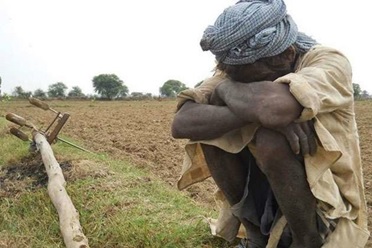


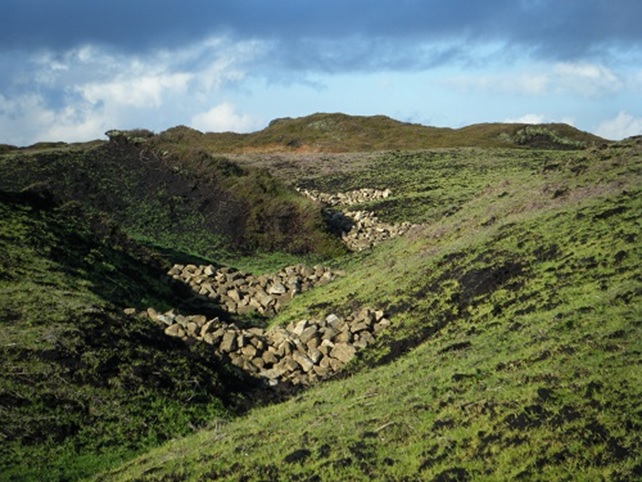
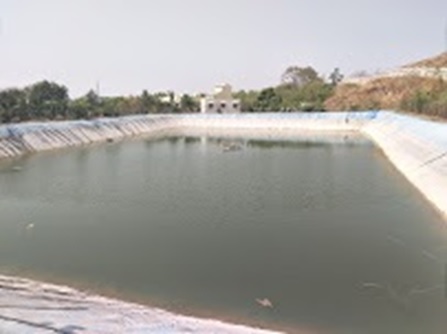









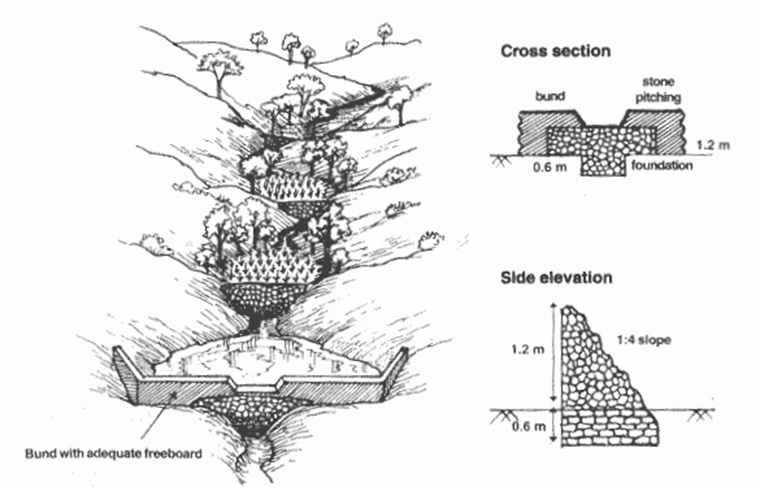

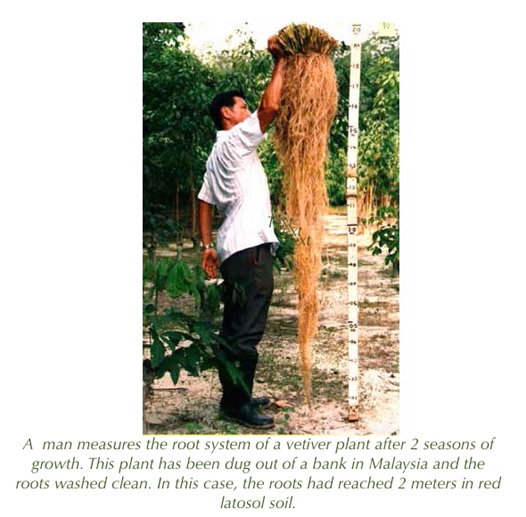


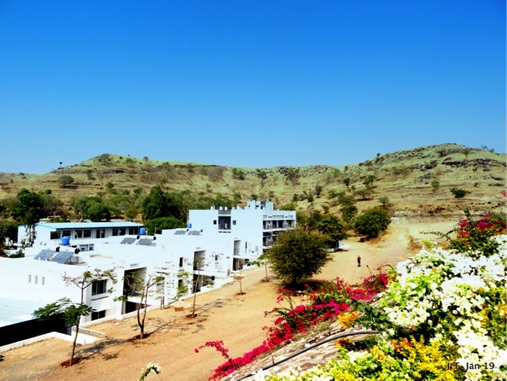
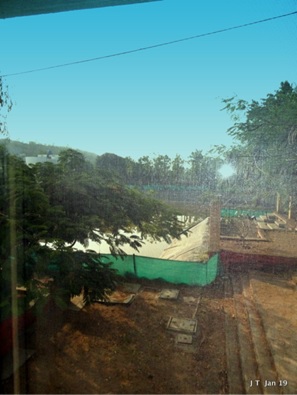






Prabhu B.V.
Thu, Feb 21, 10:28 PM
to me
Sir,
Nice writeup. As I started reading, my memory went back 20 yes to MDC & the discussions.
Thank you Sir
Prabhu BV
Ram and JT,
Ram is doing a fabulous job. Every one who sees the results will be inspired to follow in his footsteps.
I feel that we have made good progress in harnessing solar energy. The power cuts, even in the rural areas have become rare in the ares around me. I think RWH has succeeded wherever it has been tried. I think we may be able to reverse the trend and cause it to move northwards.
Now, we have two more problems: air pollution and traffic jams. The government cannot solve it alone. Public participation is needed. I think some of us need to talk about it and do our bit. To begin with, there is a need to cut down on vehicular movement, and switch over to electric vehicles.
Regards, and Godspeed.
Surjit
Soorkhan Suri
Mon, Feb 11,
to me
Grateful to you & Joseph for the inspiring details.
SIRS with great pride of being your associates.
DS Suri
Sir,
Our compliments to Ram Sharma
Thanks for sharing
Harikumar
Dave Sood (AIEindia)
Fri, Feb 8, 2:54 PM (2 days ago)
to me
Dear Surjit,
Our Course has really produced some very knowledgeable people.
Joe had done a great service to Kashmir Valley in their dredging operations and now in Rain Water Harvesting
in Dakshana Valley.
I knew Ram is associated with some Academic Institution as a CEO. I am impressed with the Institution and his contribution to it.
I am sure the project will be a success. The future classes will always remember the yeoman service that you all have put in to water conservation and its use in this Valley.
After reading such articles, I always think why the Ralegan Siddhi model has not been replicated in other villages? Anna Hazare as you know is also a retired Army Veteran.
Best Regards,
Dave Sood
Managing Director
AIE
D-57 Chattarpur Enclave,
New Delhi, India 110074
+91 98100 37663
Thanks Dave. Yes, I also wonder why the Ralegan Siddhi model is not replicated more widely.
However, we do hear now and then of some villages that have followed the Ralegan Siddhi model. See for eg Hiware Bazar, also in Ahmednagar District.
https://www.youtube.com/watch?v=H53Od0tvoXI
Dear Sir,
thanks for forwarding a very illuminating article.
with kind regards,
Harjit
Joseph Thomas
Fri, Feb 8, 7:15 PM (2 days ago)
to me
Thanks. Let’s see how it is received. Dakshana project is entirely
comments and recommendations. No completed work as yet. However, Dr
Kataria (the previous owner), and Dakshana have already done a lot of
work. So it is a no risk project.
Anil Sunita
Sat, Feb 9, 12:25 PM (1 day ago)
to me
What an achievement by Thomas & Ram both 19th NDA alumnus in making Dakshana project a Success Story.
Well Done & God Bless.
Anil
Kishan Bhatia
8:07 AM (12 hours ago)
to Yogesh, me
Thank you very much Surjit jee for sharing this article. I visited Ralegad Siddhi and met Anna Hazare about 15+ years ago when INDUSA was looking at the on-gong rural development projects at about 30+ NGO across India engaged in up lifting rural conditions. INDUSA selected Vigyan Ashram, Pabal for funding its development projects. We had inquired Anna jee if we could fund one or more of his development projects, he being a Gandhian kindly declined stating that the village wants to remain self reliant – no foreign funds.
I have been collaborating with Vigyan Ashram, Pabal. Pabal is located SW of Ralegad Siddhi on Highway 54. First major project INDUSA helped VA was to fund establish a 100,000 cubic feet rainwater harvesting tank. Since then we have collaborated on and INDUSA has funded many developmental projects. Today my understanding is, VA is self sufficient in water supplies.
I am forwarding your message to Dr. Yogesh Kulkarni with a request to put together an article describing in water harvesting technology – especially what VA has accomplished in these areas. VA is one of first institutions that has build its new buildings that conform to third Industrial Revolution specifications with structure suitable for rainwater harvesting as well as green solar power.
Water table in India would continue to decline as long as major river water linkage initiatives remain incomplete. Under Minister Gadkari Godavari and Narmada rivers linkage using underground pipes is in progress. Same technology would/could be used to complete linkage of many more rivers across India. My understanding is up to 80% of Monsoon water can be harvested to substantially improve water table of India.
Kishan
Thanks Kishan. I searched the internet and found a website http://www.indusa.com/ for INDUSA. Is it yours ?
Have also looked up the satellite image of Vigyan Ashram and find that, indeed, they have a rain water harvesting tank. However, I believe that they can do more, thereby supporting an orchard and a larger number of students.
River linkage is a grandiose project that will gobble up land and other resources. I think it is better to do grassroots projects.
Only Western Rajasthan and Ladakh are deserts. Western Rajasthan is already receiving water from the Rajasthan Canal. Ladakh is not involved in river linking. All other parts of India can manage water with conservation, recycling and rain water harvesting — all grassroots projects.
Dear Sir,
Thank you for your mail. I have visited the place when Dr.Kataria owns the lands. He wanted to start rural university but the plan did not takes place. Its good that Dakshana foundation is doing good work over there.
I will request Maj Surjit ji to visit Pabal in his next trip to Pune. It is just 20kms from Rajgurunagar (On the way to Kadus). We will be happy to seek your guidance on rain water harvesting measures. Pabal is in rain shadow areas and with average rainfall in the rangd of 300 – 500 mm rainfall. You may visit http://www.vigyanashram.com for more information about us.
Thanking you,
Yogesh
Thanks Yogesh. Have visited your website and also the satellite image. You guys are doing great work which we really appreciate.
True that Pabal gets only about 500 mm rain in a year. But your ground slopes towards the Vel river. The land towards East and North East is at a higher elevation and is vacant. Prima facie, I believe that rain water from there flows into your property. So, the effective rainfall you get is 1000 mm or more. Along with recycling, enough to have an orchard giving you fruits and vegetables worth more than Rs one lakh per month.
Will contact you on your direct email ID.
Sir,
THANKS.
WITH WARM REGARDS
Picture
COL I.P. SINGH
9810516383
Rakesh Sachdeva
Feb 8, 2019, 6:22 PM (2 days ago)
to me
Inspiring Sir.
Thank you for sharing.
Best regards.
Col Sachdeva
Well, we can purify sea water. But it is expensive. Transportation
inland will cost even more.
J T
Thomas,
It does not end there.
People are known to have moved glaciers, by towing them with ships!
And now, they say, that you can even condense moisture in the atmosphere.
Artificial rain is also being attempted.
So, maybe, we will not die of thirst and hunger.
The WMD destruction invented by us are a greater danger…
Surjit
We may not die of thirst and hunger. But the poisonous chemicals we put into our water and food chain last for 100s if not 1000s of years. We may be the first species that goes extinct due to being too clever.
Please do an internet and YouTube search for Autism and see the role of poisonous chemicals in causing it. BTW Autism is increasing and is projected to reach more than 4 % of the population. If the rate does not increase further, we will still have 300 million people with Autism.
Very useful article. Must be read by all who are
concerned about environmental degradation.
I am a votary of water harvesting and have tried
out in Chennai City on a small scale. I am also
a witness to when CM Jayalalitha made water
harvesting compulsory in the state and deputed
officials to check every house in the city that it had
provision for water harvesting. I am also a witness
that in Chennai ground water level rose so much
that during rains I could bend over the wall of the
well and touch water. The water had almost reached
the ground level. Those years there was no water
shortage in Chennai. This is something which must
be adopted by all states.
I also remember reading in the TIME magazine
sometime in late 50s that this method was adopted
by Russians in Moscow by digging deep bore wells
in the city along the streets to divert all surface
rain water into the ground.
Ram Gulrajani
Thank you sir. Yes, late CM Jayalalitaa did great work in enforcing rain water harvesting at Chennai. However, much remains to be done.
The problem in Chennai is the high variation in annual rainfall. In some years, it can be as low as 20 inches. In other years, it can be as high as 120 inches. Our ancestors made tanks in almost every village. These tanks collect water in surplus years and provide water in drought years. Now, these tanks need de-silting.
De-silting the 600 plus tanks in and around Chennai will mitigate both drought and floods. This will be much better than spending more than 1000 crores on setting up desalination plants.
Chennai also needs to de-silt the four rivers that flow through the city.
Unfortunately, the good citizens of Chennai mainly think of flood relief but neglect flood prevention.
Glad to note that Environmentalist Foundation of India (EFI) is doing good work towards lake conservation in Chennai. See http://www.indiaenvironment.org
JK Bajaj
Feb 9, 2019, 3:13 PM (1 day ago)
Amazing
Vijay Krishna
8:34 AM (12 hours ago)
to me
Hello Sir , I am already using this in the .org I work with . Rgds , Vijay
Vijay
Nice to hear that sir. Please send a few pictures and at least a brief write up.
I feel so happy and proud that positive steps are being taken and that will, i am very sure, yield positive results. My ego is fanned by the fact that Sharma is my squadron!!
I wish them all the very best of luck and may they move from success to more of the the same. Love and light.
WHERE THERE IS A WILL
THERE IS
A
WAY
WE LEARNT IT IN
NDA